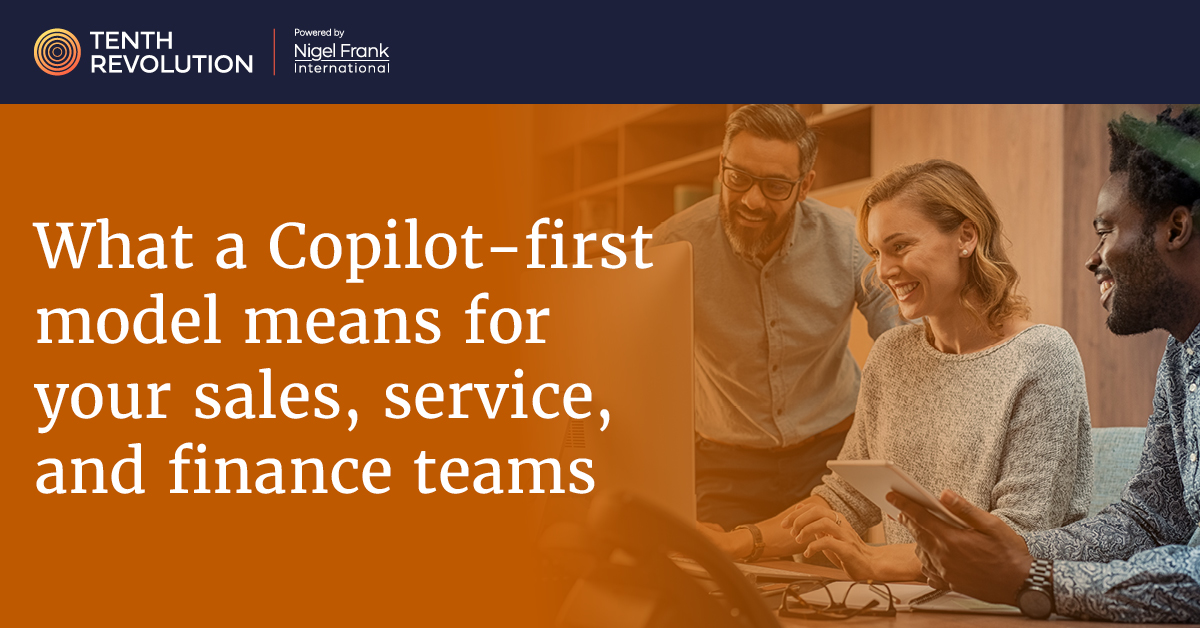
Generative AI is no longer sitting at the edge of Microsoft Dynamics 365.
With a Copilot-first model, it is becoming the default way employees interact with applications across sales, service, finance, and beyond.
This shift matters because copilots are not just automating tasks, they are shaping how decisions are made and how quickly businesses can act.
To understand the impact, let’s walk through a typical customer journey and see how copilots are changing the experience at every step.
The sales conversation begins
A sales rep prepares for a client call. Instead of sifting through emails, meeting notes, and CRM records, Copilot surfaces a briefing pack: recent interactions, open opportunities, contract details, and recommended talking points. During the call, Copilot captures notes, suggests follow-up actions, and drafts a personalized email.
The benefit for sales leaders is twofold. Reps spend less time on preparation and more time engaging. At the same time, managers gain a consistent, data-driven view of pipelines, with AI highlighting at-risk deals before they stall.
Many sales teams are now looking for professionals who can configure and manage Copilot effectively. Nigel Frank helps organizations find Dynamics 365 specialists who know how to get the most from AI-driven selling.
A service request escalates
A customer contacts support about a recurring issue. Copilot automatically classifies the case, drafts an initial response based on knowledge articles, and highlights urgency indicators. If the issue looks like it might breach service-level agreements, Copilot escalates it to the right manager before delays occur.
For service executives, this creates a more consistent customer experience. Agents are supported with real-time insights, response times shorten, and escalation management becomes proactive rather than reactive.
Finance keeps pace
While sales and service are interacting with customers, finance leaders benefit too. Copilot reviews transaction flows, flags anomalies, and predicts risks such as late payments or margin pressures. It can even initiate approval workflows, making sure routine processes continue without bottlenecks.
This level of automation helps finance teams move from after-the-fact reporting to forward-looking risk management. Leaders can spend more time on strategy, knowing that copilots are watching for red flags in the background.
The transition to Copilot-first Dynamics is already driving demand for Finance and Operations experts who understand AI-enabled workflows. Nigel Frank connects employers with consultants who can design and oversee these changes.
What it means for leadership
The Copilot-first model alters leadership priorities in three important ways:
- Data stewardship. Copilots act on the data available. If records are inconsistent or incomplete, recommendations lose reliability.
- Employee training. Staff need to learn how to guide and validate AI outputs, not just how to navigate menus.
- Governance. Leaders must set clear rules on when copilots can act independently and when human approval is required.
These are strategic decisions, not technical details. They determine whether copilots strengthen business performance or introduce risk.
Preparing your teams
For executives, preparing for a Copilot-first world involves both cultural and operational change. Pilot projects can help demonstrate value quickly, while investment in governance and data quality ensures that copilots operate on solid foundations. Training is equally important, giving employees the confidence to use AI responsibly and effectively.
Generative AI is moving from experiment to expectation inside Dynamics 365. Organizations that embrace copilots as an integral part of their operating model will see faster decision-making, stronger customer engagement, and more resilient financial performance. Those that hesitate risk being left behind by competitors already using AI to accelerate growth.




